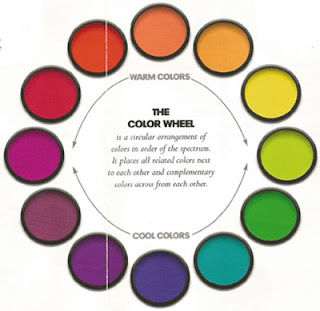1.Identify the "fixed" elements of your room that you are not planning on changing.For example, furniture, rugs, fireplace, color of woodwork or tiling, etc. All paint colors must coordinate with these elements.
2.Identify the room's natural attributes, such as room size and lighting, and the way in which you want the color of the room to affect those attributes. Keep in mind cool (blue,violet and green), dark colors recede and seem to pull away from you, making the room seem larger, light colors expand and seem to come towards you, making the room seem smaller. It's important that you make a final selection only after viewing a sample of your paint color choice in the room you are painting so you can see how natural and artificial light affects the paint color.
3.Identify what the room will be used for-rest, play, work or dinning. Think about what colors make you feel comfortable, energetic or inspired. Keep in mind the colors you choose to work with will determine whether the environment is dramatic or subtle. Some colors are associate with moods. Here are some basic associations:
*red-energy & passion
*orange-active & inviting
*yellow-bright & sunny
*green-calm & serene
*blue-refreshing & inspiring
*purple-cleansing & soothing
*neutrals-subtle & elegant
4.Start with colors in tones that naturally appeal to you. Tip:outline a large photocopy of a picture of your room. Duplicate this several times to get a few black and whites images. Used colored pencils to experiment with different color schemes and you'll be ahead of the game before you turn to chips or actual paint samples.
5-.Use the following basic color palettes:
Monochromatic Color Palette:
Using just one color and varying that color's intensities from pale to bold, light to dark, can create a room decor that is exciting or serene.
1.Start with the walls and select a soft color.
2.Select a trim color or accent wall color by identifying the color two shades darker on the same color chip.
Benjamin Moore Paint Colors in the example:
Main wall color-Adobe Dust 2175-40
Accent wall color-Sedona Clay 2174-30
This kitchen is a great example of how using a monochromatic palette in warm tones gives a room a bright, cheerful inviting look.
Complementary Color Palette
Complementary Colors- colors that actually oppose each other on the color wheel- can be used together for stunning results.
1.Start with a trim color or fabric color in a rich shade.
2.Select a "complement" of that color for your walls by finding the color across from it on the color wheel,
Benjamin Moore Paint Colors in the example:
Walls-Mellow Yellow 2020-50.
A variety of purple linens on the bed.
Using a bright yellow on the walls and contrasting cooler purple for the linens gives this bedroom and exciting but balanced look.
Analogous Color Palette
By using colors that are next to one another on the color wheel and similar in tone, you can create a dramatic but elegant color design for your room.
1.Start by selecting three colors that are next to one another on the color wheel that are similar in tone.
2.Use one of the colors more dominantly and the other two as accents.
Benjamin Moore Paint Colors examples:
Main wall color-Prescott Green HC-140
Wainscotting, upper wall color- Stratton Blue HC-142
Trim- Hamilton Blue.
Ceiling color- Sandy White 2148-50
This bathroom uses Prescott Green as its main color and green-blue and blue to highlight and define the trim, giving the room a beautiful, harmonious look.





No comments:
Post a Comment